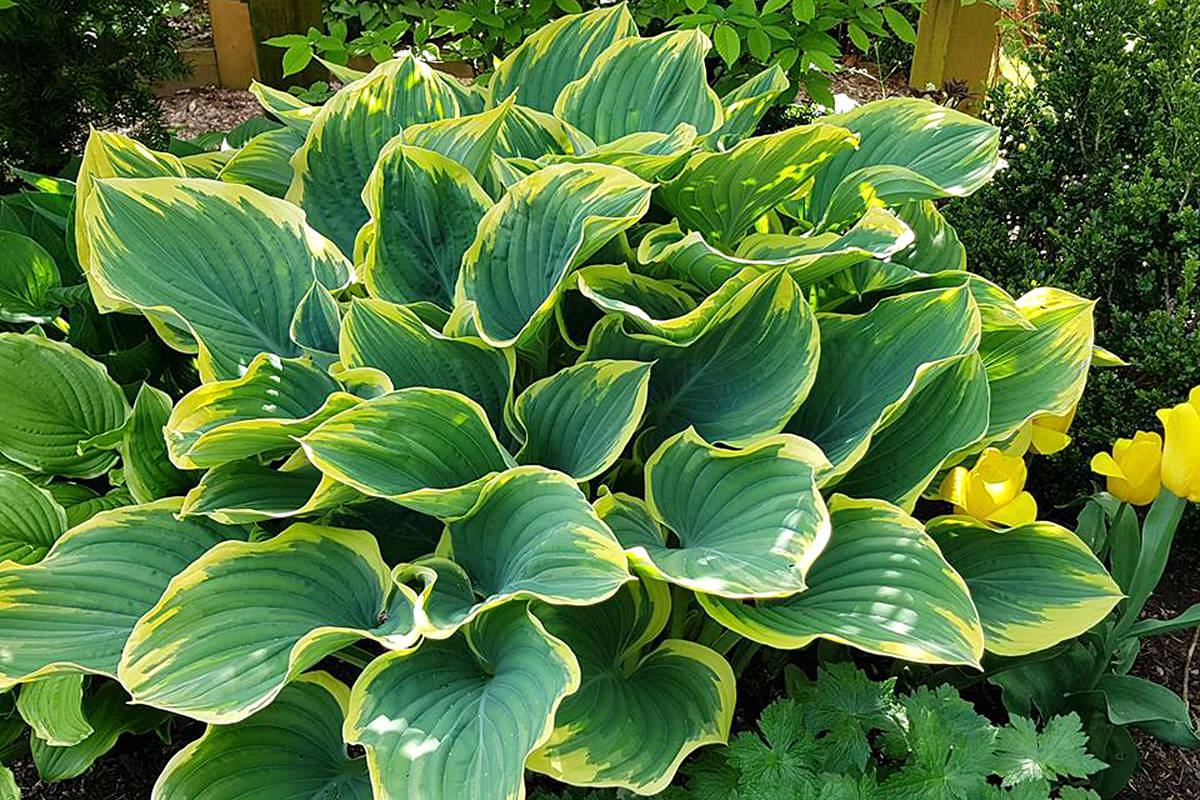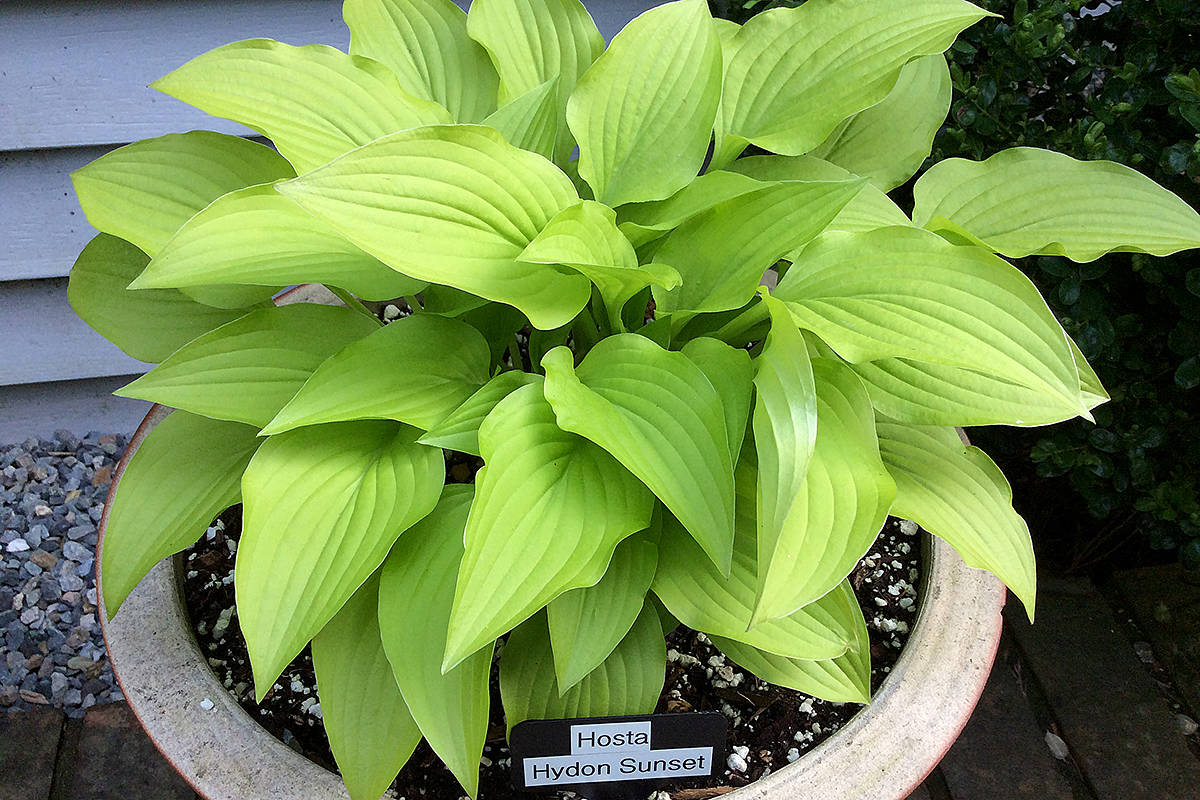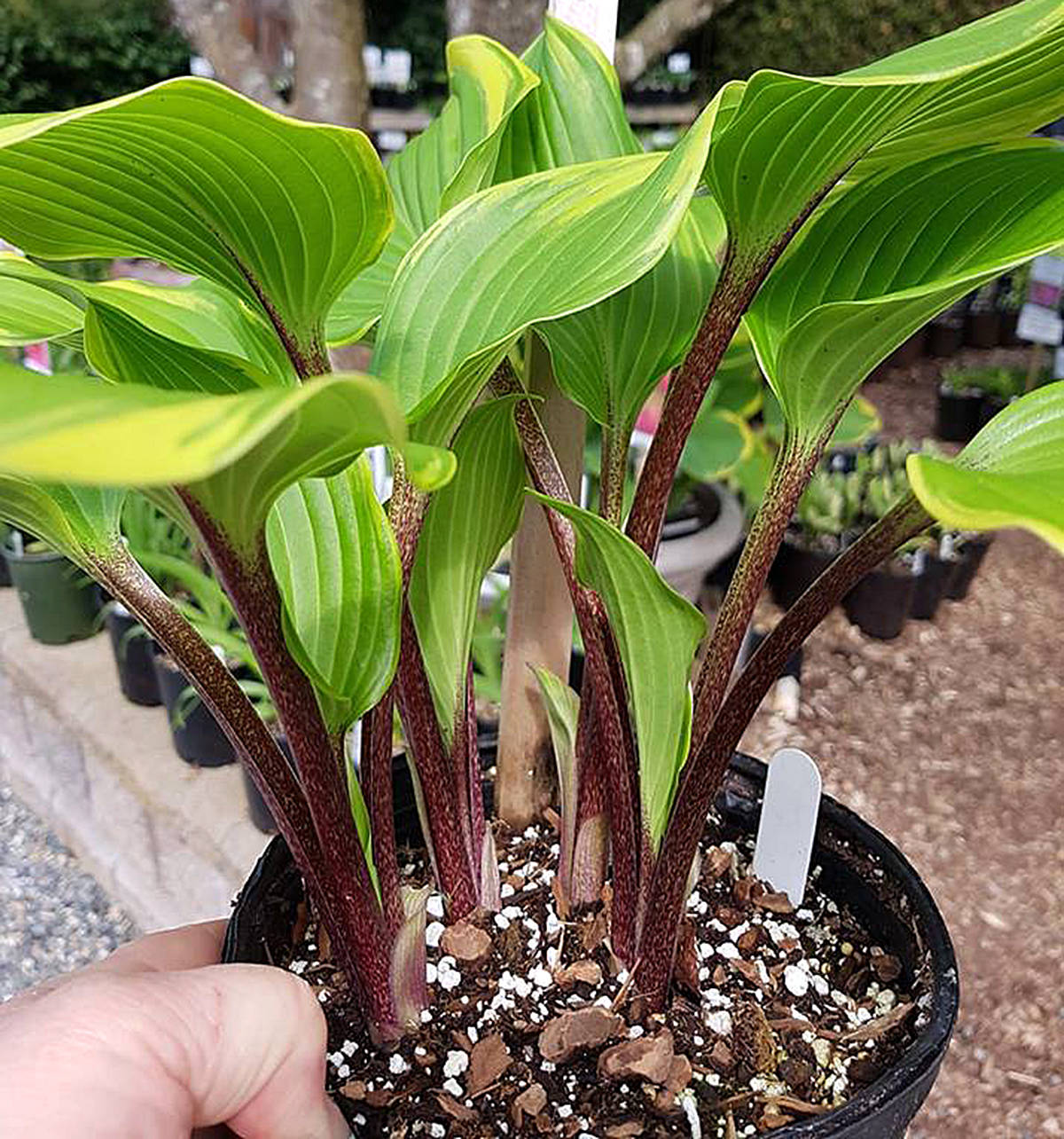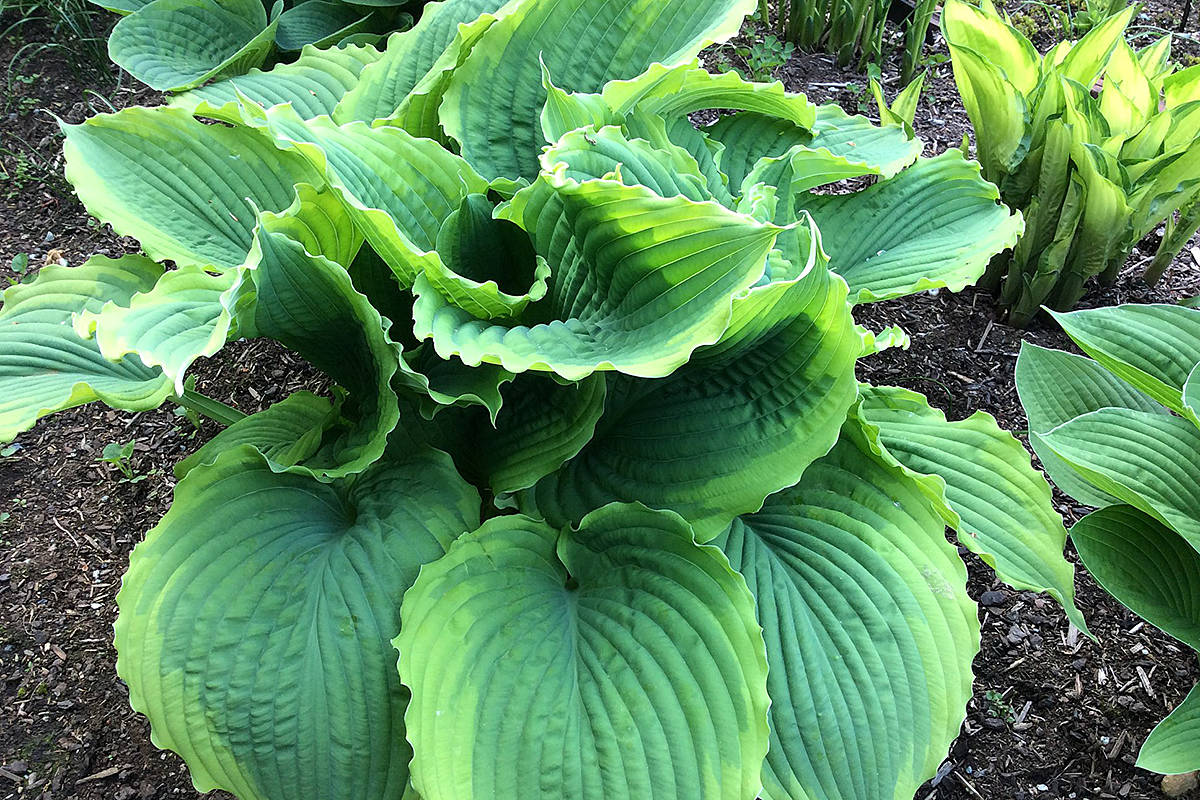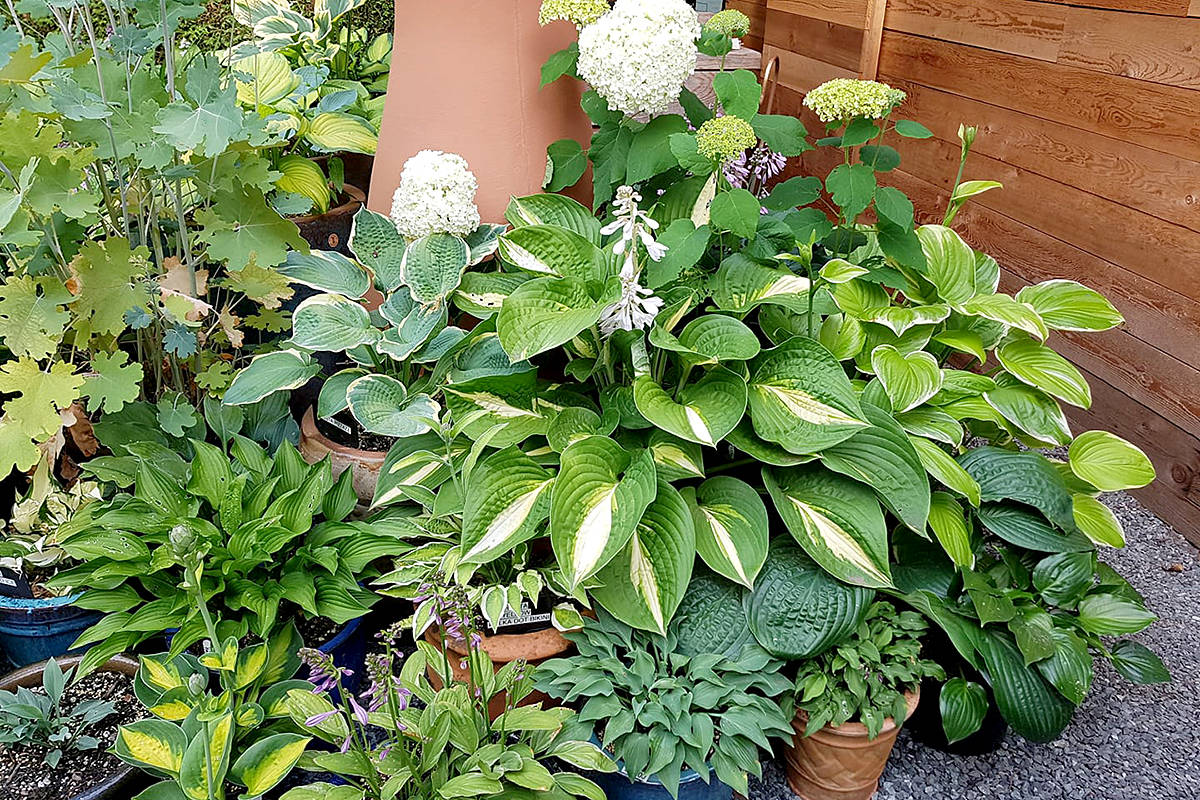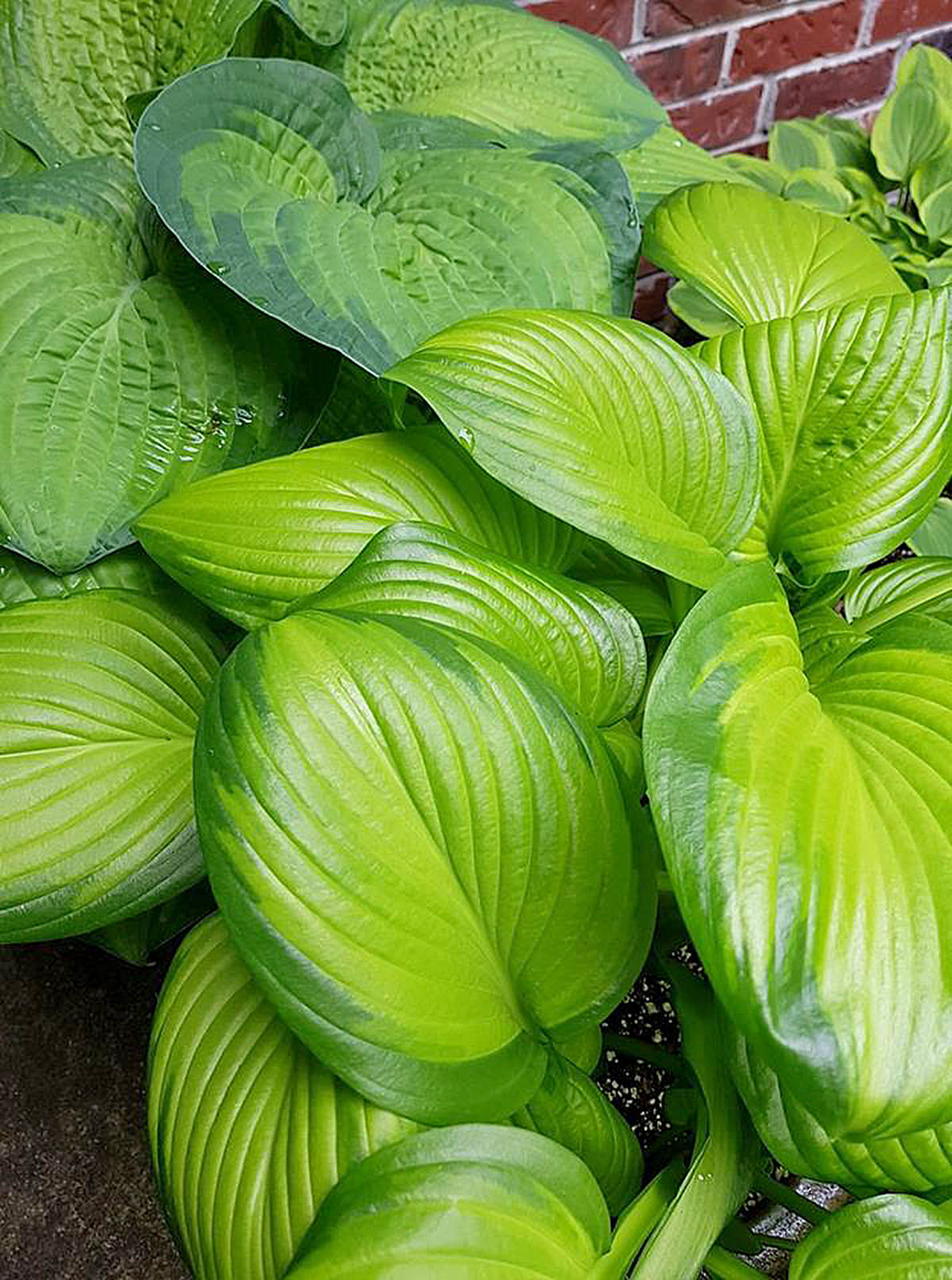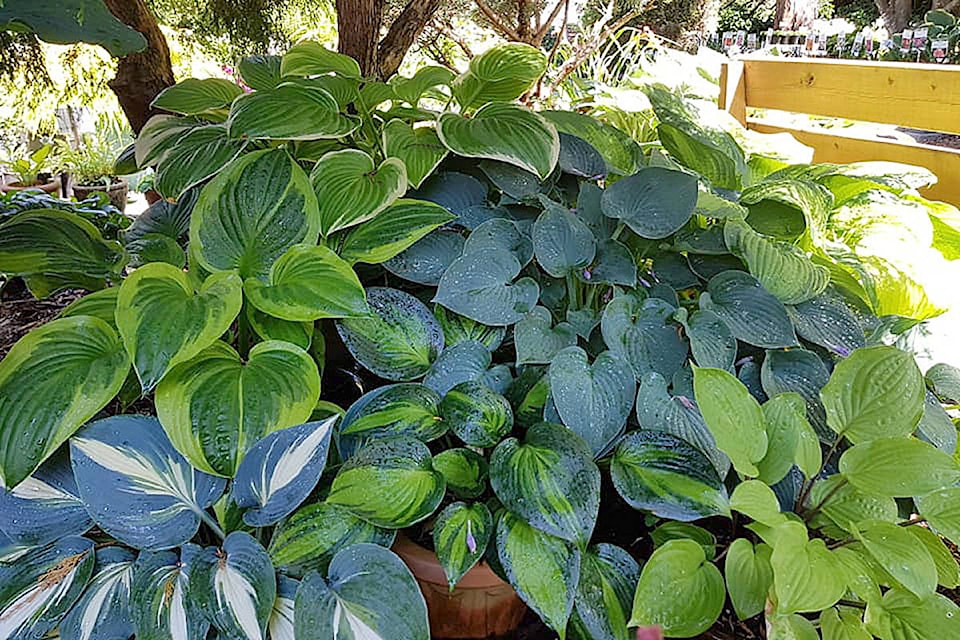by Pam Erikson/Special to the Langley Advance Times
I’m in hosta heaven!
Spring is here, the weather is warmer, the birds are singing – and my favourite hostas are up and looking amazing.
Hostas have long been one of our very favourite perennials, not only for their diversity in colours and sizes, but also for their sheer determination to survive no matter what the weather.
We have too much to do around our garden to ‘baby’ any plants, so being a strong perennial in our garden is a must.
RECENT COLUMN: Plant shopping season commences
Hostas fit the bill in so many ways. While they are one of the best plants for your shady locations, there are many varieties that do withstand either morning sun or some that even can take all-day sun.
Hostas are herbaceous perennials, meaning that they grow from a strong root and only need to be divided every few years.
Some will grow for 10 years and never have to be touched, but they have a very easy way to tell you that they are needing division – it’s called the “doughnut effect.”
Essentially, it means that when the hosta comes up in the spring, instead of coming up with nice strong eyes in a grouping, the eyes will come up and form a doughnut shape – a circle of growth with nothing in the centre.
This means that the crown, or central part of the plant, has become too crowded and needs dividing.
I find the easiest way at that point is to cut the plant into four quarters with a spade, remove the dead centre and replant the four strong sections.
Hostas enjoy either a good feeding of compost in the spring, or a sprinkling of a good, well-balanced slow release fertilizer.
We use Osmocote 14-14-14 in late April, and that is all they need for the spring and summer.
They do enjoy regular watering, but are amazingly resilient if they don’t get as much water during long summer droughts.
Even a good watering every four or five days will keep the plant alive until the fall rains.
But May and June are when the hostas are usually the stars of the garden.
The fresh new growth appears in varying shades of greens, blues, yellows, creams, and many variegated forms, as well as red-stemmed varieties.
Many of the flowers that appear in late summer are in the lavender and purple shades, but some are pure white – and those are my favourites, because most of the white flowering hostas have amazing fragrance.
Among some of the best for fragrance are Frozen Margarita, Sunset Grooves, and Invincible – just to name a few.
Hosta leaves are also quite stunning in floral arrangements.
Selecting a location for your hostas is simple – shady spots that need a flash of colour; morning sun spots work best for the blue tones and some of the yellows; and any hosta in a container looks stunning.
So, when shopping for plants for the garden this season, check out some of the many varieties of hosta available – from tiny minis to huge giants – there are so many new options available.
– Pam Erikson is owner of Erikson’s Daylily Gardens and Perennials and president of the Langley Garden Club.
